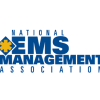Updated June 2015
CPR stretching to 35 minutes and beyond may save some children, countering assumptions that CPR beyond 20 minutes is “futile,” finds a study published Jan. 21 in Circulation.
Investigators from the University of Pittsburgh School of Medicine and colleagues analyzed data on 3,419 children treated for an in-hospital cardiac arrest from 2000 to 2009 at 328 U.S. and Canadian hospitals participating in the American Heart Association’s Get With the Guidelines–Resuscitation program. About 28 percent survived to hospital discharge.
Overall, shorter durations of CPR were associated with better survival rates, but some kids survived even after lengthy CPR, as these data show:
- About 44 percent of children given CPR for one to 15 minutes survived.
- 17.8 percent of those given CPR between 16 and 34 minutes survived.
- 16.6 percent of kids who received CPR for 35 minutes or longer survived.
- About 60 percent of children given CPR for 35 minutes or longer had good neurological outcomes.
“This study dispels common misperceptions that CPR is futile beyond 20 minutes,” said lead author Renée Matos, M.D., M.P.H., a recent fellowship graduate in pediatric critical care at Children’s Hospital of Pittsburgh, in an AHA news release. “We believe that healthcare providers now will consider longer-duration CPR for some patients, and that a thoughtful approach to providing longer durations of CPR to some children will save more lives.”
More collaboration with EMS at high-performing hospitals
Staff at hospitals that had the best 30-day survival rates for heart attack patients reported more cooperation and collaboration with EMS than hospitals with the worst survival rates, a new study shows.
Researchers from Yale University in New Haven, Conn., and Brigham & Women’s Hospital in Boston and colleagues analyzed information collected during site visits and detailed interviews with staff at 11 U.S. hospitals that ranked in the top and bottom 5 percent of performance on 30-day acute myocardial infarction mortality rates, using 2005–2007 Centers for Medicare & Medicaid Services data. Staff at hospitals with the best survival rates described “broad, multifaceted strategies to support collaboration with EMS” in MI care. Although staff at both ends of the spectrum said EMS was important in providing timely care for these patients, higher-performing hospitals “demonstrated specific investment in and attention to EMS through respect for EMS as valued professionals and colleagues, strong communication and coordination with EMS and active engagement of EMS” in quality improvement efforts, the study reports.
The study is in the February issue of Annals of Emergency Medicine.
More evidence supporting prehospital CPAP
Patients with acute respiratory failure due mostly to congestive heart failure are less likely to require intubation and are more likely to survive if they receive prehospital CPAP, a new study shows.
Researchers from the University of Western Australia pooled data from five previous studies, which included three randomized controlled trials, involving about 1,000 patients. The studies included in the meta-analysis were conducted in New Jersey, Alabama, Canada and France. Just under half (47 percent) of patients received CPAP; characteristics such as age, gender and illness severity were similar among both groups.
Patients receiving CPAP were 69 percent less likely to be intubated and 59 percent less likely to die, according to the study, which was published Feb. 1 in the Journal of Prehospital Emergency Care. In 2011, the National Association of EMS Physicians released a position statement supporting the use of prehospital CPAP.
Nearly one in five hospital patients return within a month
Nearly one in five (18 percent) of hospital patients returned for acute care within 30 days of discharge, research shows. About 40 percent returned via emergency departments, according to the study, which looked at data on 5 million hospitalizations of adults in California, Florida and Nebraska over a 15-month period in 2008 and 2009. For every 1,000 discharges, there were 97.5 emergency treat-and-release visits and 147.6 hospital readmissions in the 30 days following discharge.
The study, by researchers from the Yale University School of Medicine, is in the Jan. 23/30 issue of JAMA.
EMS involvement in ‘systems of care’ key to stroke outcomes
EMS plays an important role in “regional stroke systems of care” that ensure patients experiencing an acute ischemic stroke get prompt, optimized treatment, according to updated guidelines from the American Heart Association/American Stroke Association published online Jan. 31 in Stroke.
The guidelines state that the primary goals for EMS when dealing with stroke patients is rapid evaluation, early stabilization and neurological evaluation using prehospital stroke assessment tools such as the Los Angeles Prehospital Stroke Screen or Cincinnati Prehospital Stroke Scale. The most important piece of information EMS needs to collect is the time of symptom onset (the moment the patient was “last known normal”), which is used to determine whether patients should receive fibrinolytic (clot-busting) treatment.
Patients also should be transported without delay to stroke-ready hospitals. Though each region must assess its own resources, that may mean bypassing the closest hospital and instead taking patients to the nearest certified Comprehensive Stroke Center or Primary Stroke Center or, if that’s not feasible, “the most appropriate institution that provides emergency stroke care,” the guidelines state. EMS can also speed stroke treatment by notifying receiving hospitals that a patient is en route.
The guidelines also call for the continued development of telestroke networks, including remote consultations and teleradiology for fast and accurate image interpretation. The guidelines were last updated in 2007.
Read the full guidelines at tinyurl.com/ckj7nf7.












